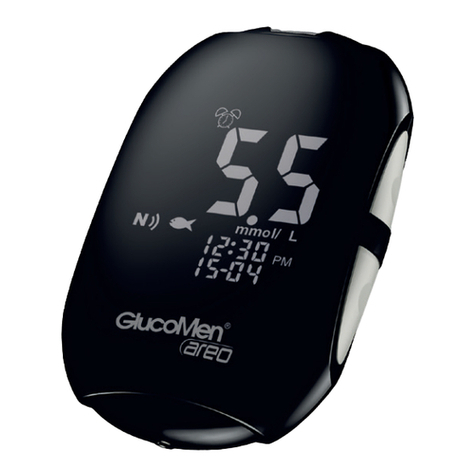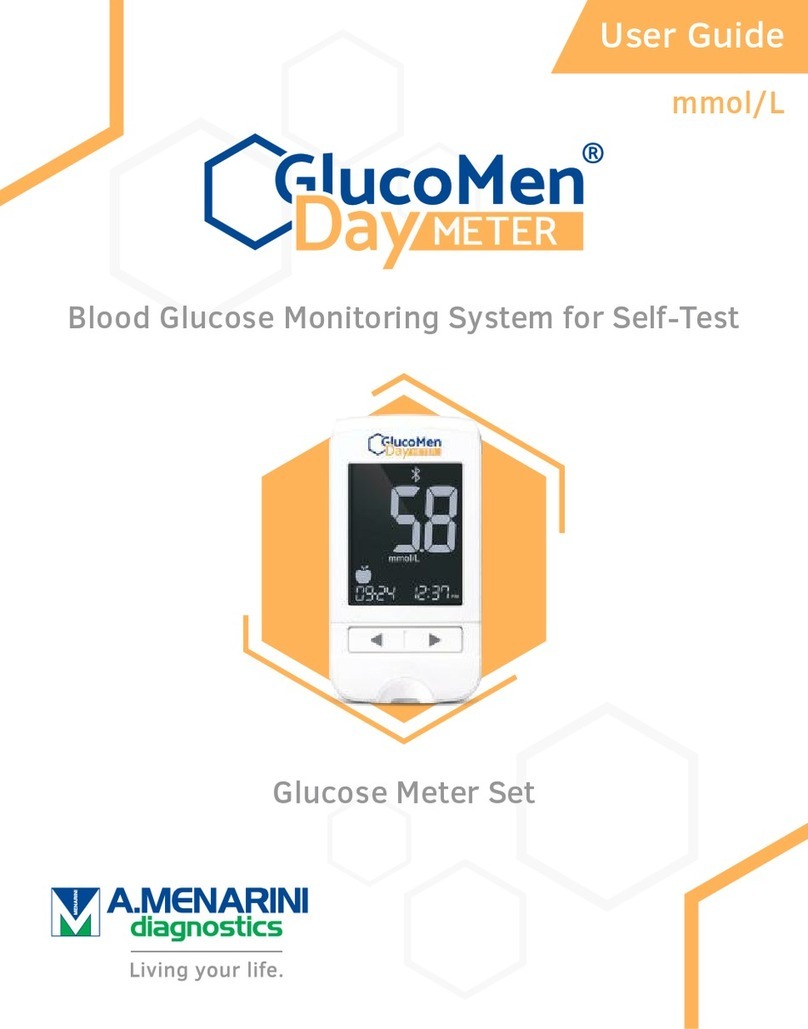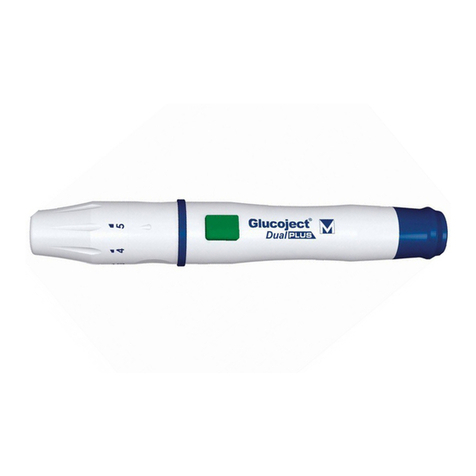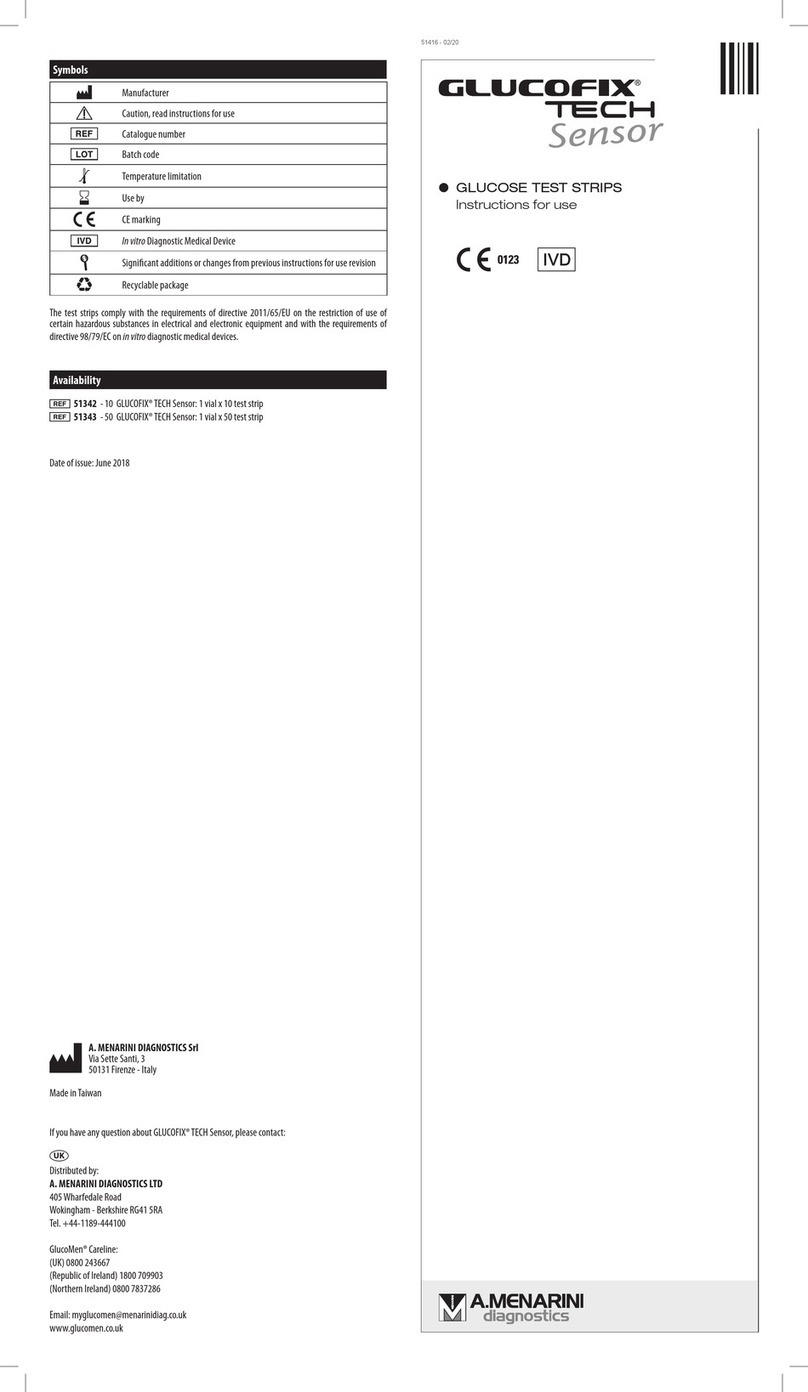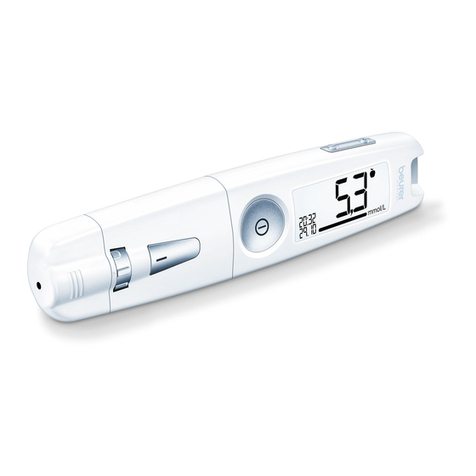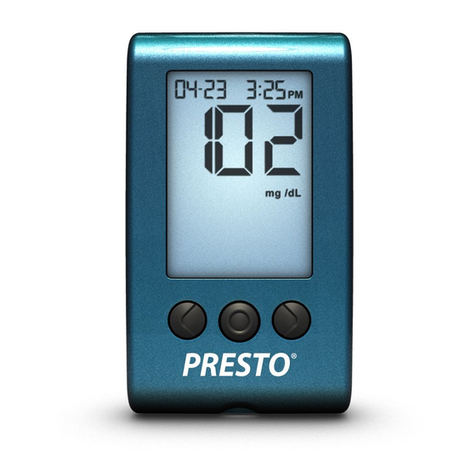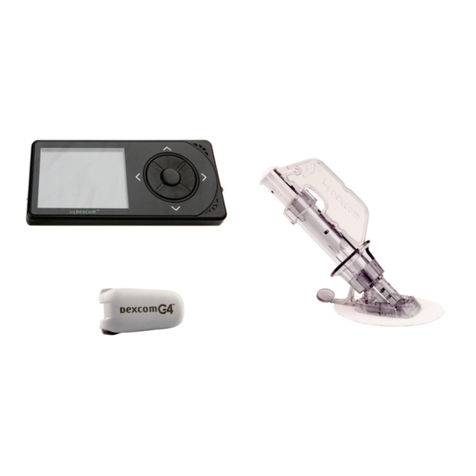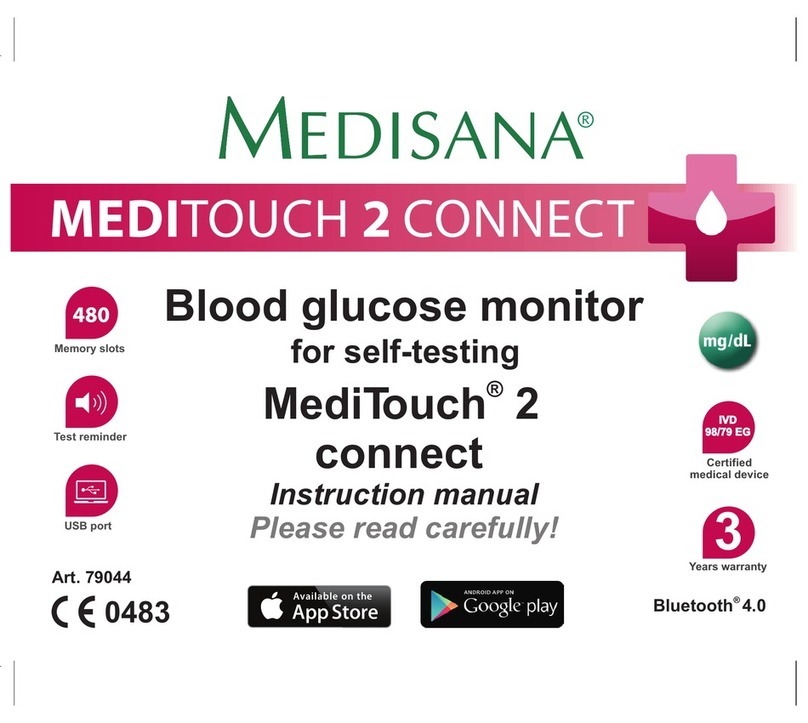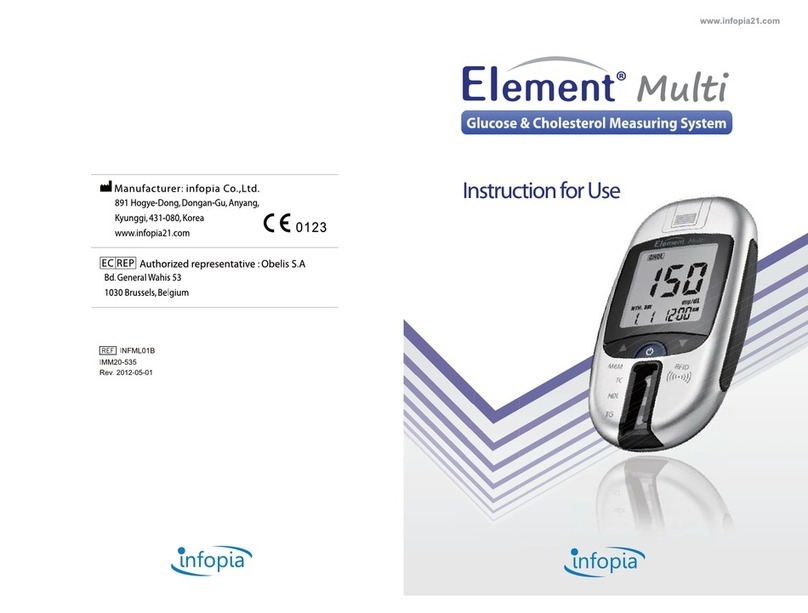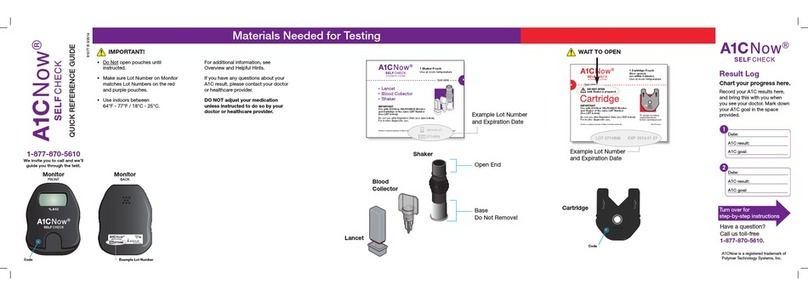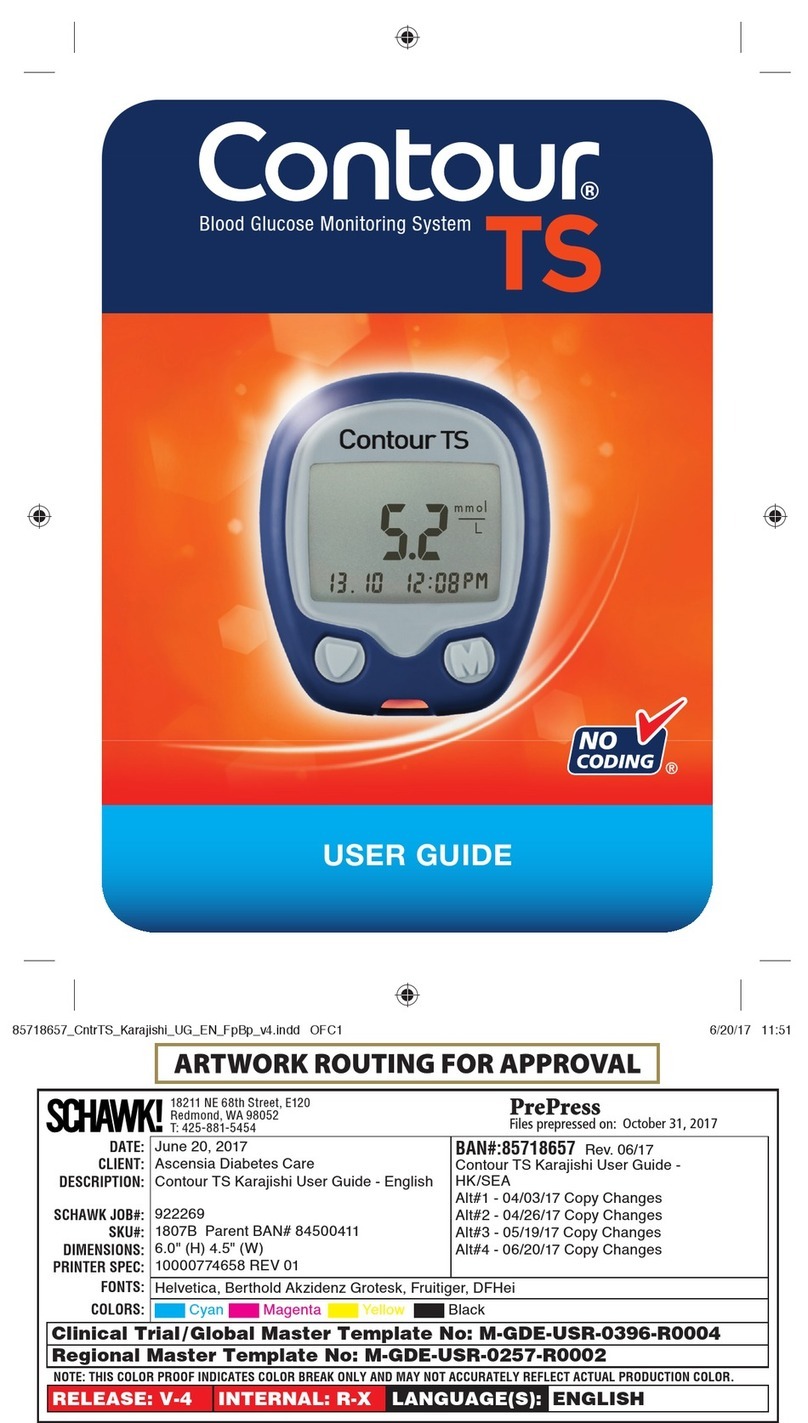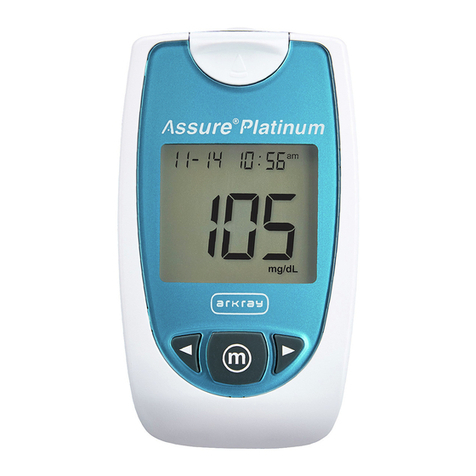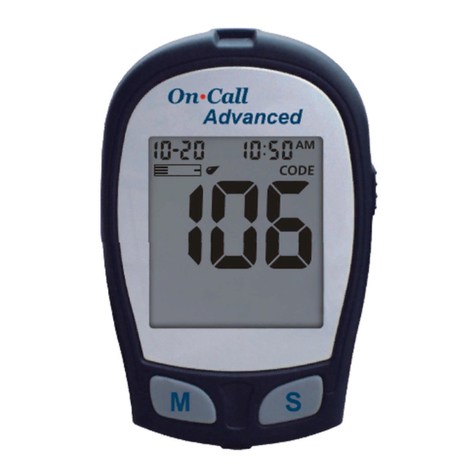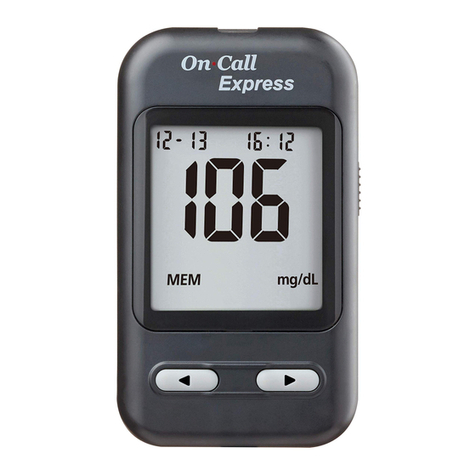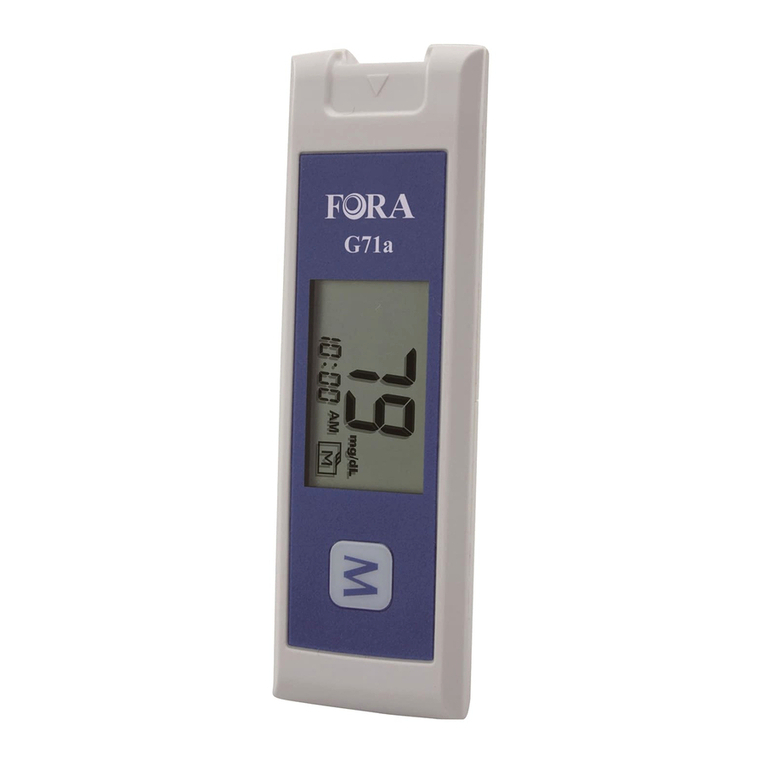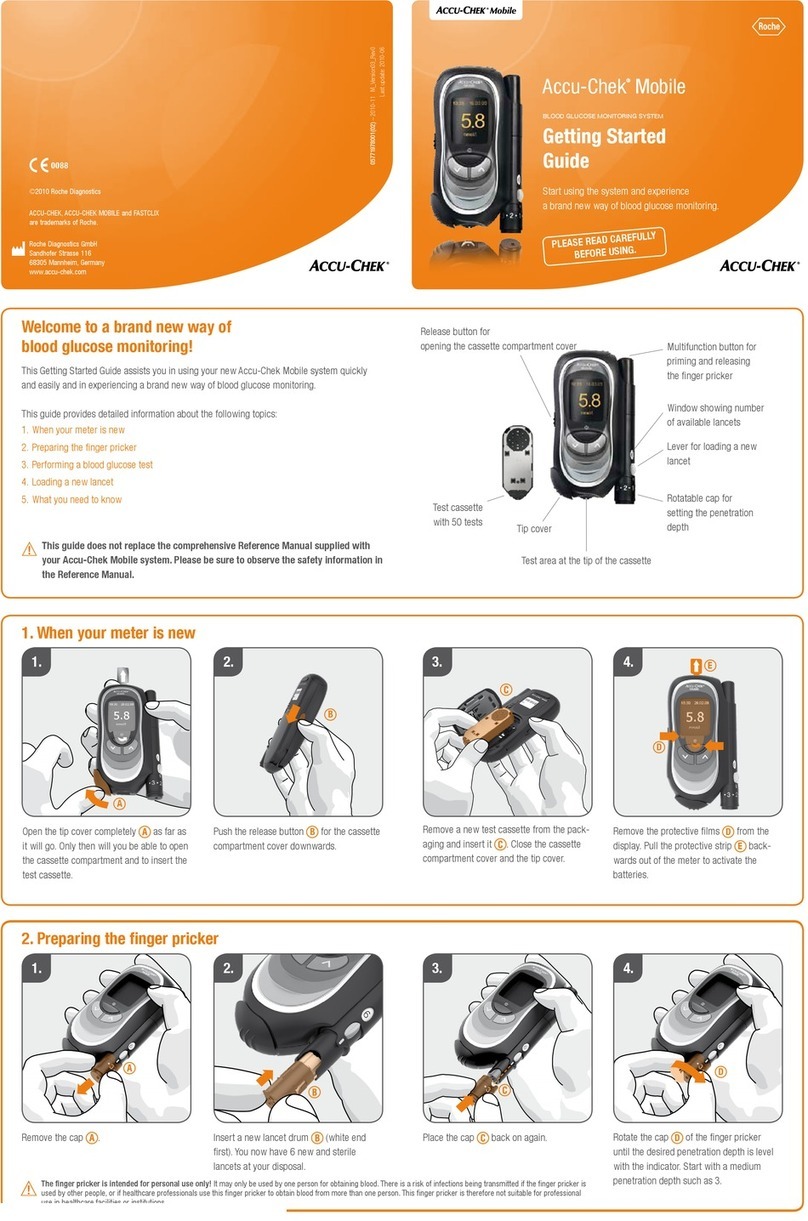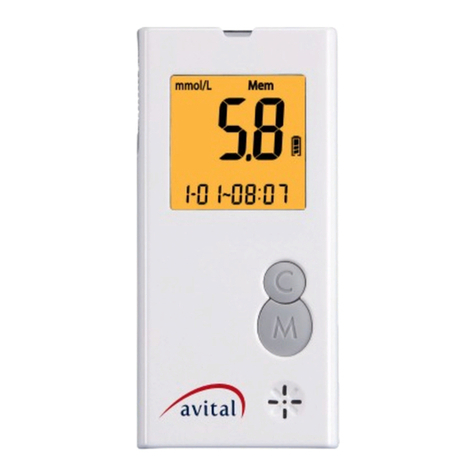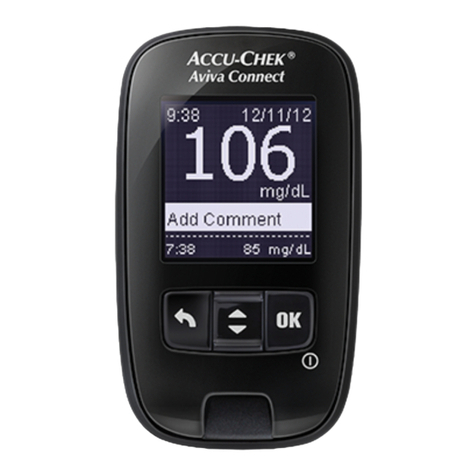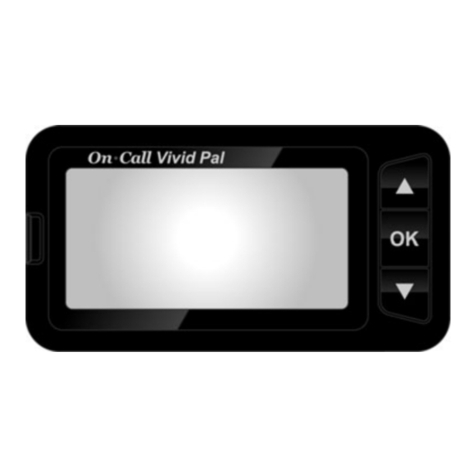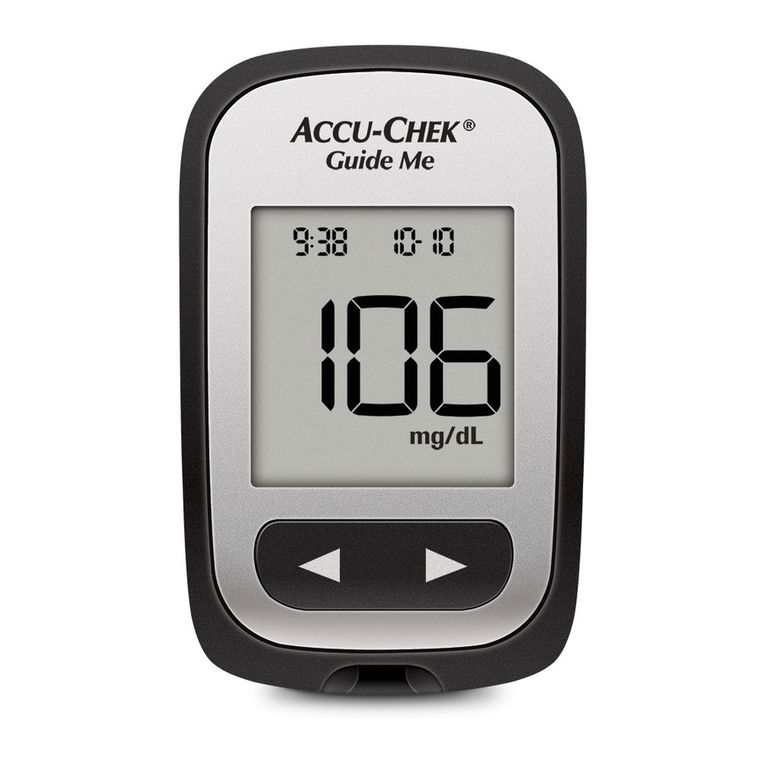
4
CAUTION
●If “HI” appears on the screen: “HI” appears if your test result is
more than 8,0 mmol/L. Retest your blood β-ketone immediately
using a new sensor. If the reading is still high, contact your doctor
or healthcare professional immediately. “0,0” appears if your blood
β-ketone test result is less than 0,1 mmol/L: no action is required.
●If test results do not match with how you feel: Make sure you have
performed the test correctly as explained in §5.2. If no procedural
errors were made, conduct a β-ketone control test to check that the
system is working properly (§5.3). If the system is working properly
and your blood test results still do not match with how you feel,
contact your doctor or healthcare professional.
●Do not ignore test results. Do not alter your treatment on the basis
of the β-ketone result without previously consulting your doctor or
healthcare professional.
d. Press the release button to remove the test strip. The meter will
switch off.
CAUTION
● When ejecting the used test strip, point your meter downwards and
away from others.
●Disposal of biohazardous waste
Used test strips and lancets are biohazardous waste. They must therefore
be disposed according to local regulations on biohazardous waste.
5.3 β-Ketone control test
Conduct a control test if:
● you suspect the meter or GlucoMen® areo β-Ketone Sensor test strips
are not working properly;
● the meter has been dropped;
● the meter is damaged;
● your β-ketone test results do not match with how you feel;
● you want to check the performance of the meter and GlucoMen® areo
β-Ketone Sensor test strips when you rst get them or any time you want
to check their performance before a blood β-ketone test.
NOTE
● To test your meter and GlucoMen® areo β-Ketone Sensor test strips
only use the GlucoMen® areo Ket Control (provided separately).
● Do not use the GlucoMen® areo Control for testing the GlucoMen®
areo β-Ketone Sensor: erroneous results would be obtained.
CAUTION
●Do not use control solutions after their expiry date. The expiry date is
indicated on the control solution vial next to symbol.
● For accurate test results, allow the meter, test strips and control
solution to adjust to its surroundings for at least 30 minutes before
running the control test:
- temperature: 10 to 40 °C (50 to 104 °F);
- humidity: < 85% RH.
● Do not use the control solutions if 3 months or more have passed
since rst opening the vial.
●Do not drink the control solution. It is not intended for human
consumption.
● Avoid contact of the solution with the skin and the eyes as this could
cause inammation.
To perform a β-ketone control solution test, proceed as follows:
a. Insert a new GlucoMen® areo β-Ketone Sensor test strip into the test
strip port. The drop icon starts blinking on the screen and the ketone
icon “Ket” will be shown at the bottom left hand corner of the display.
If nothing appears on the screen, remove the test strip, insert it into the
test strip port again and wait for the drop icon to start blinking.
b. Enable the CTL mode (§2.1).
WARNING
● If the CTL mode has not been enabled before performing the control
solution test, the result will be stored as a blood test and used for
calculating averages.
● Always enable the CTL mode before conducting a control solution
test or the results may fall outside the acceptable range. To enable
the CTL mode, simultaneously press the UP/DOWN ( / ) buttons
for two seconds while the drop icon is blinking on the screen.
● Once CTL mode is enabled, CTL mark is displayed together with “ctl”
message written in bigger characters on the main screen.
c. Gently shake the control solution vial before testing. Discard a drop
before use. Squeeze a drop of control solution onto a clean, hard, dry
surface.
d. Touch the control solution drop with the tip of the test strip until the
check window is full. A beeper will sound (if enabled) as the countdown
timer starts on the screen.
NOTE
● The test will not start if you apply your control solution directly to the
check window. The test starts when the meter detects the control
solution. During the test the meter counts down from 8 to 1.
●Tightly close the control solution vial.
●Do not touch the test strip once the meter has started the countdown.
e. Check that your test result is within the acceptable range indicated
on the GlucoMen® areo β-Ketone Sensor test strip foil pouch. If out of
range, make sure that no procedural errors were made, then repeat the
control solution test.
CAUTION
● If you still have test results that fall outside the acceptable range, stop
using the system, and contact the A. Menarini Diagnostics customer
service.
f. Press the release button to remove the test strip. The meter will
switch off.
6. Managing your test results
WARNING
Please make sure that time and date are correct before the rst use,
and adjust them if needed (§7.1). If the time and date settings are not
correct the meter will memorize the test results assigning them wrong
time and date.
6.1 Reviewing glucose past results
You can review past results stored in the memory. Your meter stores up to
730 glucose test results with dates, times and markers.
a. Make sure the meter is off (to turn the meter off hold for 3 seconds
until the screen switches off).
b. Press for 2 seconds to turn the meter on and enter the memory recall
mode (the “mem” icon appears on the screen and the “Glu” icon will
blink).
c. Press to enter in the glucose results memory.
d. The most recent test result appears on the screen. The screen also shows
the “Glu” icon, the date and time of the test, and the corresponding
markers.
e. Press or to scroll through all the stored data.
f. Press for 5 seconds to switch the meter off.
NOTE
● If there are no results in the memory, the screen displays “ooo“.
● At the end of reviewing the individual test results, the screen displays
“ooo“.
●Keep or pressed to speed up the browsing through the results.
6.2 Viewing glucose results averages
You can view the glucose result averages over the set intervals (1, 7, 14,
30, 60 or 90 days).
a. Follow steps a, band cin §6.1.
b. Press to enter the average mode (the “AVG” icon appears on the
screen).
c. The 1-day average appears on the screen.
d. Press to scroll through the averages.
e. After reviewing the 90-day average, press to return to the memory
recall mode (step cof § 6.1).
f. Hold for 5 seconds to switch the meter off.
NOTE
● If there are less than 2 results in the memory for the
averaged period, the screen displays “ooo“. If there
are no results, the screen displays “ooo“.
● The averaging function equalises HI results to
600 mg/dL (33,3 mmol/L) and LO results to
20 mg/dL (1,1 mmol/L).
6.3 Reviewing β-ketone past results
You can review past results stored in the memory. Your meter stores up to
100 β-ketone test results with dates, times and markers.
a. Make sure the meter is off (to turn the meter off hold for 3 seconds
until the screen switches off).
b. Press for 2 seconds to turn the meter on and enter the memory recall
mode (the “mem” icon appears on the screen and the “Glu” icon will
blink).
c. Press or on time to shift to β-ketone memory section (“Ket” icon
blinking on the display).
d. Press to enter in the β-ketone results memory.
e. The most recent test result appears on the screen. The screen also shows
the “Ket” icon, the date and time of the test, and the corresponding
marker (only “ctl” is allowed for β-ketone measurement).
f. Press or to scroll through all the stored data.
g. Press for 5 seconds to switch the meter off.
